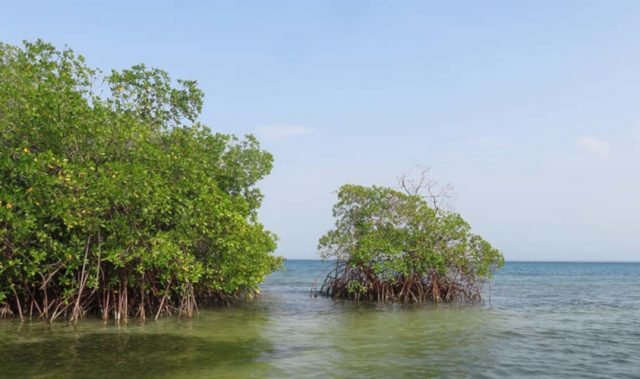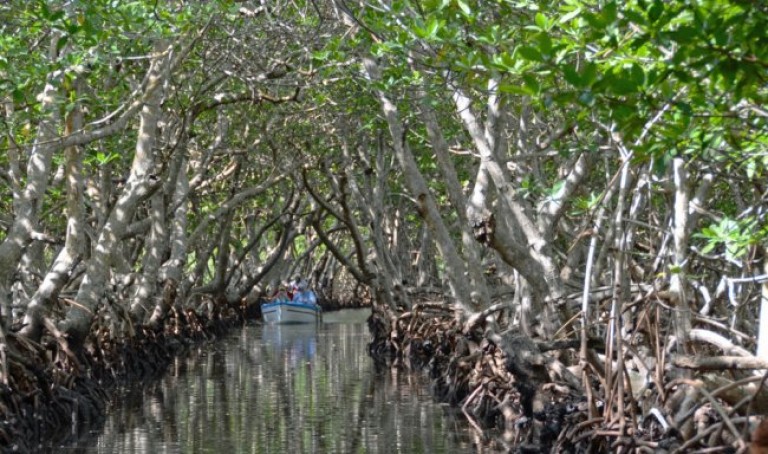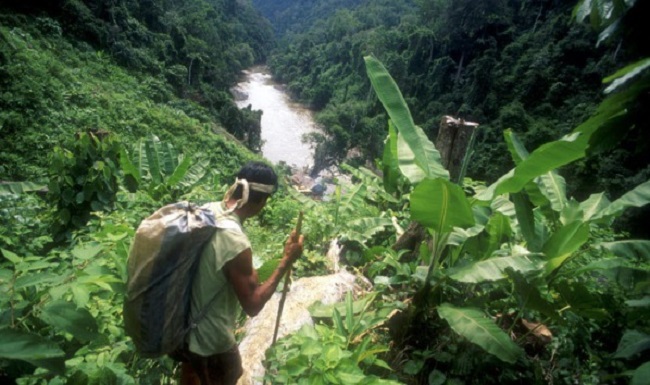
AsianScientist (Aug. 28, 2015) – As much as 42 percent of coastal carbon emissions and 3-19 percent of all greenhouse gas (GHG) emissions could be reduced if Indonesia’s remaining mangroves are conserved, according to a study published in Nature Climate Change.
Ranked fifteenth in the world by land area and fourth by population size, Indonesia has more than 17,500 islands and 95,000 km of coastline. In 1980, Indonesia had an approximate 4.2 Mha of mangrove forests but in 2005 the remaining area only measured 2.9Mha. This loss is equivalent to deforesting an area of 52,000 football field-sized mangrove forests each year.
Worldwide, only 0.7 percent of all tropical forests consist of mangroves. However, carbon emissions from mangrove forests alone account for 10 percent of global tropical deforestation emissions. This enormous potential for mangroves to act as excellent carbon sinks or enormous carbon sources is the clinching point for mangrove conservation.
Mangrove forests are unique because of the ecosystem services they offer: nutrient cycling, soil formation, fish nursery grounds etc. However, their key feature is the capacity to store carbon above and below ground. High rates of tree growth coupled with anaerobic water-logged soils allow for slow decomposition and a high carbon storage capability.
So why are mangroves so efficient at carbon storage? The answer is soil. The team found that living mangrove trees accounted for one fifth of carbon storage in the ecosystem, soil holds approximately 78 percent, with dead wood holding the remaining the two percent. By preventing mangrove deforestation, the authors estimate a range of 10-31 percent of annual land-use emissions in Indonesia could be reduced.
Indonesia’s mangrove carbon stocks (1,083 ± 378 MgC/ha) alone were assessed to be more than the Indo-Pacific region average (1,023 MgC/ha). To understand the scale of Indonesian mangrove effectiveness in carbon storage, non-mangrove forests in neo-tropical regions store between 141-571 MgC/ha. Thus, Indonesia’s mangroves act as effective carbon sinks, with a total stored carbon amount of 3.14 Pg (petagrams = 1,015 g), equivalent to 11.52 Gt of carbon dioxide.
Lead author Professor Daniel Murdiyarso, a scientist with the Center for International Forest Research (CIFOR) and his team evaluated 39 mangrove sites in eight locations. They found that soil bulk density—the weight of soil in a given volume/the higher the density, the more compact the soil—increased with depth in all sites but one, and soil carbon concentration decreased with depth in majority of the sites.
They also found the mangroves in less populated regions (e.g. Bintuni) had almost a two-fold increase (1397 MgC/ha compared with 593 MgC/ha) in carbon stocks compared to the mangroves in highly-disturbed environments, (e.g. Cilacap, a populated area exploited for >70 years).
Aquaculture, specifically shrimp production, is one of the major drivers behind mangrove deforestation in the region, with Thailand, Vietnam and Indonesia marked the top three exporters. The authors cited model examples of Malaysia and Bangladesh, which have protected their mangroves against further shrimp farm expansion.
In fact, previous studies have shown that if Indonesia were to halt the aquaculture expansion, the lack of revenue would be severely outweighed by potential economic damages of the US$ 6-42 billion/year due to global GHG emissions.
The way forward? In an email interview, Murdiyarso said it would be possible to even restore disused shrimp ponds into becoming carbon sinks by considering the appropriate mix between geo-hydromorphic characteristics such as substrate, inundation and tidal range. In the meantime, the best we can do is to “cut emissions, not mangroves.”
The article can be found at: Murdiyarso et al. (2015) The Potential of Indonesian Mangrove Forests for Global Climate Change Mitigation.
———
Copyright: Asian Scientist Magazine; Photo: CIFOR/Flickr/CC.
Disclaimer: This article does not necessarily reflect the views of AsianScientist or its staff.












